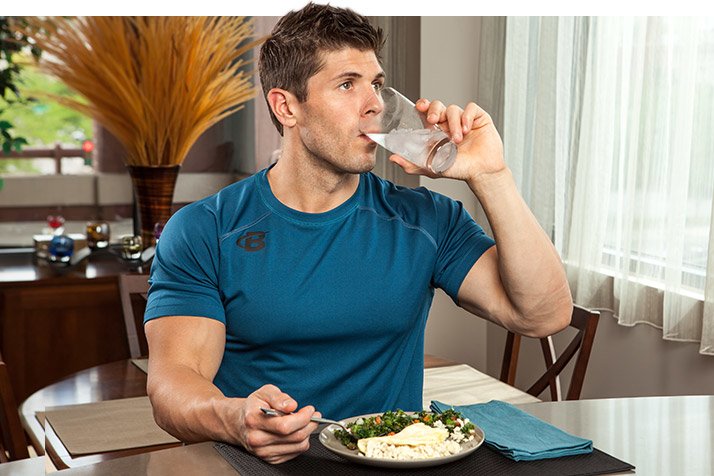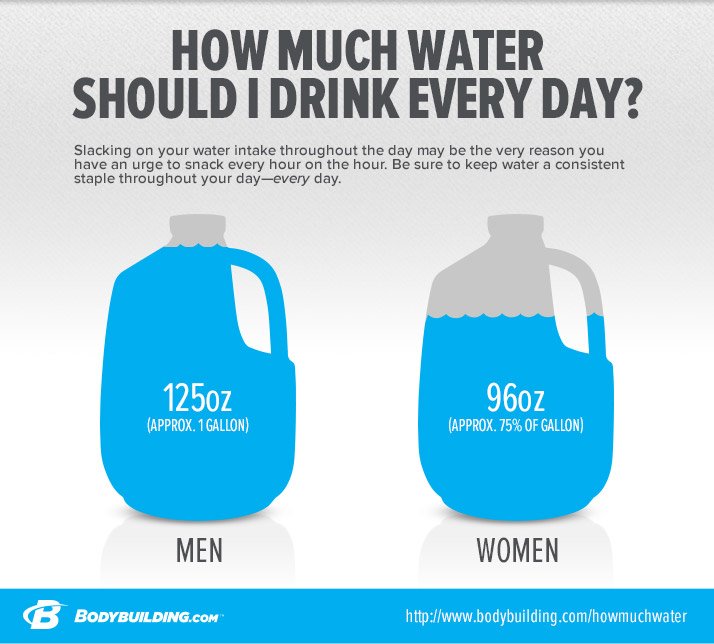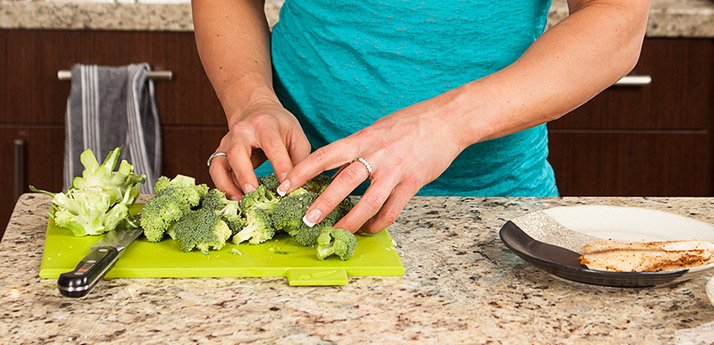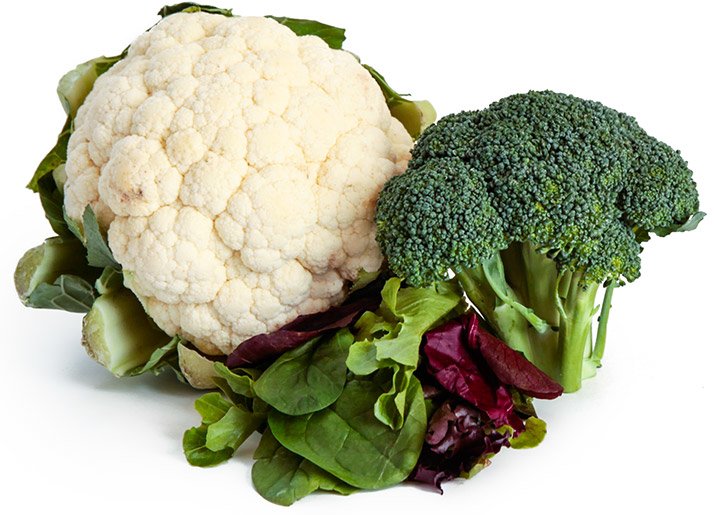
4 Tips For Weight Loss Without Counting Macros
Stuck in a weight-loss rut, but tracking macros isn't your thing? Include these 4 strategies to keep the weight falling off without lugging the scale around!
By now, you've read online about the benefits of tracking your food intake and measuring out portions. For many people, this switch makes all the difference when it comes to fat loss, but perhaps it just isn't your style. Hey, I get it. Many people simply can't wrap their head around the idea, and aren't interested in trying.
So are you doomed to subpar results? Of course not! You can drop pounds and achieve a caloric deficit without lugging around a food scale. But if fat loss is truly your highest priority, you'll need a strategic approach that enables you to:
- Control hunger
- Cut out hidden calories in your life
- Eat more or less like someone counting their macros, only without the weighing
Along with regular high-quality training, these four strategies could be enough to help you find that caloric sweet spot that finally ends your frustration.
Drink more (calorie-free) fluids
I know, I know. "Drink water, duh." But here's the thing: Water can be a dieter's best friend, but only if you stick to it daily. And if you're not going to be strategic about macros, you're going to have to be doubly committed to other approaches every day.
Water and Fullness
The stomach signals fullness based on the volume of what you consume, not the amount of calories. Have you ever noticed you can eat a few more chocolate-covered pretzels without hesitating, but you struggle to finish the last few pieces of broccoli on your plate? Well, your cooking might be to blame, but so is this: The broccoli is over 95 percent water. As a volume counter, your stomach responds to the increased fluid intake from the broccoli to a much greater degree than the crushed-up crumbs of the pretzels. Your stomach is a volume counter, rather than a calorie counter.
To capitalize on this, you can use water to help keep your portions in check. In an effort to promote fullness, try "preloading" your meal by drinking 12-16 ounces of water 10-15 minutes before you eat. This will give your body a head start on feeling full and help to reduce your intake of calories.

Water and Hunger
Your body's signal for thirst is weak at best. For instance, it's well known that by the time you feel thirsty, you're already experiencing some of the nasty consequences associated with dehydration. These include irritability, fatigue, lack of focus, and a slew of performance-related consequences.1
Even when we're dehydrated, our hunger response often overrides the thirst response, and as a result, we experience a strong urge to eat, even if we just ate an hour ago! Slacking on your water intake throughout the day may be the very reason you have an urge to snack every hour on the hour. Be sure to keep water a consistent staple throughout your day—every day—or it won't work!
How Much Should I Drink?
Men should aim for a minimum of 125 ounces per day, and women should aim for a minimum of 96 ounces per day—in addition to water consumed during exercise.2,3 That part is easy to miss. If you're far below this amount at the moment, don't rush into the above recommended amount. Slowly increase your intake over the course of a week or two so that your body—specifically, your bladder—can adjust accordingly.

Stop Drinking Your Calories
If you're serious about fat loss, you should already have kicked soda, sweet tea, and creamer to the curb. If you haven't, well, there's why your "deficit" has been anything but. These simple sweet additions have a major impact on your total calorie intake, and once they become part of your regular rotation, it's easy to order or drink them without even realizing it.
But the problem of what else to drink won't just go away. Water makes for a great calorie-free drink, but if you're like me, it can get a little boring sipping on the flavorless stuff all day. Consider one of these options for a burst of flavor without the added calories:
- Add a scoop of branched-chain amino acids (BCAAs) to your water bottle.
- Consider a flavor-enhancing agent such as Mio or zero-calorie Propel flavoring.
- Make your own fruit-infused water by soaking fruit in a pitcher of water overnight.
- Toss a bag of a tasty herbal tea into your water. Seriously, this works!
As with anything in life, moderation is key. While drinking BCAAs or low-calorie flavorings is a great way to break up the monotony of plain water, you're still consuming some calories. Go overboard with them, and those calories can add up quickly. For instance, relying on BCAAs all day could supply you with up to 100 additional calories. That's not much, but if you count calories tightly, don't forget to include it.
Get Hands-On With Portions
Ever seen somebody take out their food scale in a restaurant? Kudos to them, but for most people, this is a recipe for public ridicule.
Fortunately, our hands are always by our side. Using your hand as a consistent portion-control device will help you to efficiently and reliably ration your intake. Here's how to construct the perfect meal, from highest priority to lowest.

Palmful of protein
Aim to consume roughly a palm-sized portion of protein at each of your meals and snacks. Stick with lean, complete (animal, soy, or quinoa) protein options for most of your meals to ensure you're getting all the essential amino acids necessary for muscle growth and recovery. Also, choosing a lean protein can help promote fullness without using up too many calories.
Fistful of carbs
Use the size of your fist as a guide to portion out high-fiber carbohydrates at your main meals, specifically before and after training. Just make sure to time your pre-workout meal at least an hour before you hit the gym so that you have plenty of time to digest the nutrients. For those meals not close to training, save your fistful for plenty of vegetables.
Some staple high-fiber carbohydrates include oats, brown rice, quinoa, and whole-grain bread and tortillas, as well as fruit. Stick to these types of carbohydrate options most of the time.
Two fistfuls of veggies
Aim for 1-2 fistfuls of vegetables at each meal. Still hungry? An additional fistful of veggies is a much better alternative to the calorie-packed cookies or chips in your pantry. Keep in mind that potatoes, peas, and corn are starchy vegetables that are higher in calories than many other vegetables. You can eat starchy veggies in moderation, but you should count them as carbohydrates. Low-calorie veggies include broccoli, cauliflower, carrots, squash, zucchini, spinach, kale, and peppers.

Although fruits are rich in an abundance of vitamins, minerals, and antioxidants, keep in mind that they're often higher in calories than vegetables. Opt for fresh or frozen fruit most of the time. If you choose canned fruit, make sure the fruit is canned in water rather than a sugary syrup. Also, incorporate dried fruit sparingly, as it is much more calorie-dense than fresh or frozen options.
Two to three fistfuls of fruit spread throughout the day is a great starting place. You can dial it down if that's too much. A fistful of fruit makes a great addition to snack time or part of a pre- or post-workout meal!
Thumbs up for fats
For liquid fats such as oils, and spreads, and butters, incorporate two thumb-sized portions 3-4 times per day, preferably not around your training session.
For solid fats such as nuts and seeds, you'll have to count out one serving. For example, 24 almonds is equivalent to roughly one serving size.
Choose nutrient-dense over calorie-dense foods
To put it simply, by choosing nutrient-dense foods—those foods that contain a high ratio of nutrients versus calories—more often than calorie-dense foods, you will take in far fewer calories. For example, a standard serving of pasta contains roughly 200 calories, whereas a standard serving of spaghetti squash contains 31 calories. If you opt for spaghetti squash rather than a hearty pasta dinner five nights per week, you'll end up consuming 845 fewer calories, which will make a major difference!

Of course you're not going to eat spaghetti squash five nights a week, but there are many options you can easily swap out for more calorie-dense ones:
- Cauliflower in place of potatoes
- Greek yogurt in place of sour cream or mayo
- Almond flour in place of wheat flour
- Egg whites in place of eggs
- Vegetable fries in place of potato fries
That last one might sound weird, but many vegetables can actually be made into fries. Carrot and zucchini fries are both delicious and easy to make in the oven.
Not only are nutrient-dense options loaded with essential vitamins and minerals, but they're often a great source of fiber, which aids in promoting fullness. Calorie-dense options, such as granola, pasta, and bagels contain few nutrients and little fiber. They're almost guaranteed to leave you feeling hungry again soon after you eat them!
If you've been able to achieve great results without counting macros, let us know your secret in the comments!
References
- Casa, D.J., Armstrong, L.E., Hillman, S.K., Montain, S.J., Reiff, R.V., Rich, B.S.E., Roberts, W.O. & Stone, J.A., National Athletic Trainer's Association Position Statement: Fluid Replacement for Athletes. Journal for Athletic Training, 35(2), 212-224.
- Sawka, M.N., Burke, L.M., Eichner, E.R., Maughan, R.J., Montain, S.J. & Stachenfeld, N.S. (2007). ACSM Position Stand: Exercise and Fluid Replacement. Medicine and Science in Sports and Exercise, 39(2), 377-390.
- Casa, D.J. & Clarkson, P.M. (2005). American College of Sports Medicine Roundtable on Hydration and Physical Activity: Consensus Statements. Current Sports Medicine Reports, 4, 115-127.
